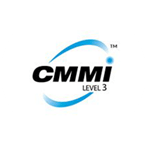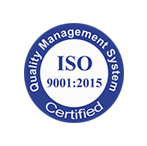Healthcare is such an industry where the stakes wouldn’t get higher than human life itself. The system of healthcare is always dependent on well-trained HCPs and solutions powered by high-end technology. With a well-inclined interest and involvement of the public and funding, healthcare is an industry that is always open for opportunities to adopt the latest technologies.

These days, industries are witnessing new technologies are emerging every month, which is powering them to achieve their goals effectively. Augmented reality is the technical foundation that streams out towards a plethora of solutions serving different industries. The technology conveniently merges the real world with digital information to empower users with enhanced data on-the-go.
The era demands the tech to revolutionize healthcare training and education with effective tools and impactful visualization. This article would take a quick dip into the ocean of possibilities that Augmented Reality would bring into the healthcare sector.
Reimagining Medical Education with AR
Medical students and trainees in the healthcare sector require to have in-depth theoretical studies of human anatomy, invasive procedures, and pathology. It is highly essential for them to have an understanding of real-world health complications and different ways to treat them. With augmented reality implemented in medical training, it could introduce interactivity to add value to the theoretical knowledge with scenario-based simulations.
Augmented reality is also helpful in introducing gamification towards imaginary care cycles to assist practitioners in their training process. Healthcare students can conveniently view different clinical cases and then choose from multiple diagnostic and treatment methodologies. The technology allows them to replay the module as many times until they learn the process well. AR applications are availed for tablets, smartphones, or even smart glasses to help medical students or trainees with overlaid patient cases on any surface, be it on the table, walls, or even in the lab.
The immersive technology is capable of empowering experienced health professionals with supplementary AR training to enhance their skills and replenish their knowledge.
Augmented reality is well-known for its capability to bridge the gap between the physical and digital worlds. The immersive technology while introduced with the healthcare segment could train the HCPs to level up with paperless environments for the procedures of admission, discharge, and transfer (ADT), ease further processes, improvise surgeries, and also assists in post-discharge patient support.
Envisioning ADT through Augmented Reality
The process beginning from admission to discharge and transfer involves time-taking tasks including managing records of patients, arranging wards, keeping track of treatment plans, confirming information of dosage, and the request for various medical equipment. AR could be deployed to optimize the rising workload of healthcare professionals at the hospital. Nursing staff may not need to rush through departments, reach out to the EHR desktop, or fill multiple paper forms each time a patient arrives.
AR apps designed for smart glasses are a perfect option to allow nurses to keep their hands free while having a word with the patient, preparing their ward, and making other arrangements.
Augmented Blood Tests to Avoid Errors
Collecting a patient’s blood to test is the fundamental way for realizing what’s happening to their body. AR is highly beneficial for this procedure. As not all the patients and veins are the same, it is a hard task for the HCPs to finding a vein at the first attempt. AR helps in minimizing the number of missed veins via handheld scanners that use non-invasive infrared technology to get a vision of the vein systems on the skin of the patient.
The skin is scanned to give a view of the musculature in colors of red or green, while the veins are represented as dark lines. The procedure can be controlled by professionals with the vein finder, steering clear of bifurcations and valves, to help them easily draw blood from the patient’s vein on the very first attempt.
Surgeries Piloted by Augmented Reality
Surgeries are the most serious and invasive procedures where the stakes are human life. Surgeons make use of a wide range of tools and still be extremely aware of the vital statistics of the patient while performing the operation. During microsurgeries, they need to work via a medical microscope, And, if the surgery is to be least invasive, the surgeon does the navigation process using an endoscopic camera.
Even though such surgeries are challenging, the surgeons have their moral duty to maintain an equal balance of focus to keep the patient safe during and post-procedure. AR-powered smart glasses are a powerful solution to crucially optimize the surgeon’s concentration by keeping his eyes on a single screen instead of split attention between multiple monitors.
AR Support After Discharge
When a patient completes their treatment at the hospital and leaves, it doesn’t always mean is their rehabilitation period came to an end. For recovery from an invasive process or critical condition effectively, patients need to stick to a post-discharge plan of treatment. A few patients might have to struggle with several changes in their day-to-day life and would need support during this period.
Augmented reality is powerful enough to add the fun element and make the stressful post-discharge routine comprehensive for the patients. It educates patients interactively regarding the prevention of the disease and its treatment. The technology never lets the patients feel left out as the interactive module helps them conveniently understand their condition and engages them with the succeeding therapy.
Medical professionals can install AR-powered apps on their smartphones and tablets to make demonstrations possible to clarify what is happening to the body and how it could be treated with the patient and their caregivers. It allows all parties to be involved and informed for contributing more towards the recovery of the patient in the best way possible.
Making Augmented Healthcare A Reality
Immersive technology is slowly taking over the healthcare industry as it has not got to every corner of the sector. AR in medical training and healthcare education is a worthy investment as it creates a much safer environment and HCPs with enhanced skills, precision, and knowledge.
AR enabling medical students to understand better the human anatomy and provides them insights about the vital body statistics with utmost accuracy, covering all points mentioned in the article. The future seems empowered for the healthcare professionals and secured for those seeking their services with augmented reality playing its role in medical education and training.












